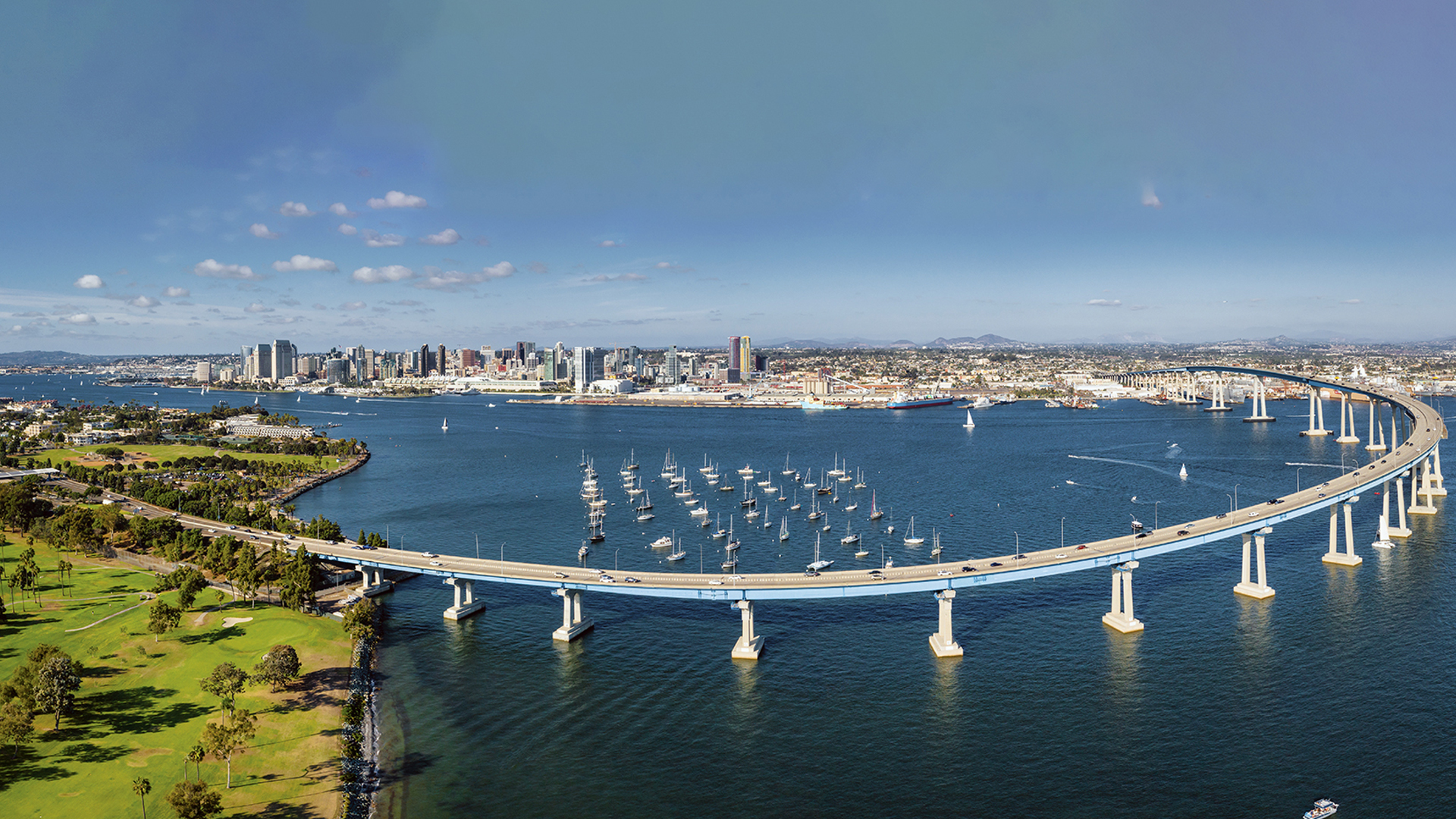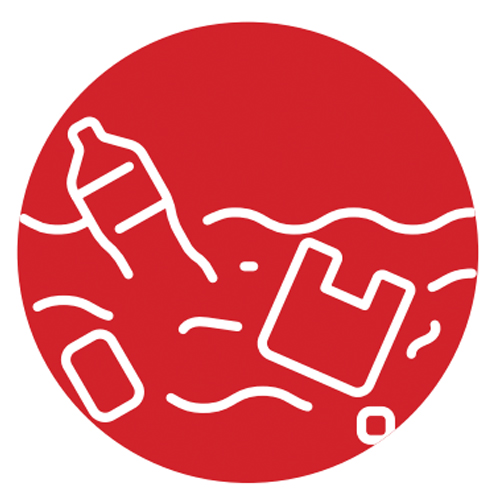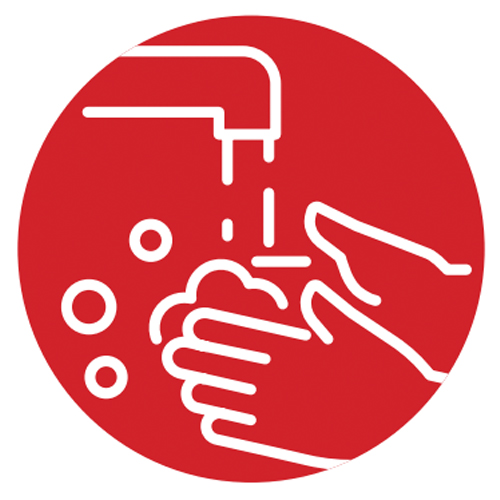In SDSU’s Own Backyard

For university researchers, contributing scientific solutions to issues of importance to San Diego County is always an action item.
By Jeff Ristine
Last year Bruce Appleyard, a city planning and urban design professor at SDSU, hosted a workshop for researchers on both sides of the California/Baja California border to delve into watershed management and other crossborder topics along with government officials and nonprofit groups. Appleyard and co-investigators also received a grant from the San Diego Foundation to develop a climate, watershed and coastal resiliency education and action plan for the binational region.
This is just one of a variety of projects in which SDSU has put its research to work for the surrounding community, even as close as walking distance from campus, on matters addressing issues affecting quality of life and the natural environment.
Here are four SDSU researchers whose work focuses directly on issues of interest to the San Diego region.

AREA OF RESEARCH: Wildfire Prevention
RESEARCHER: Alicia Kinoshita, Associate Professor of Engineering
Everyone’s relieved when the last embers of an urban wildfire are extinguished. Environmentally, however, the damage continues.
As Alicia Kinoshita and her students found after a 2018 fire burned 38 acres on a hill just across the freeway from SDSU, the loss of native vegetation typically degrades water quality. The soil, suddenly unprotected, no longer holds back metals, plastics and other harmful materials in sediment and topsoil, in this case, dumping into Alvarado Creek. The regrowth has a less suitable root system, and a year or two later an entire bank collapsed.
Even worse: if it’s non-native vegetation that burns, the damage “is going to feed back into the fire cycle,” Kinoshita says, regrowing faster than native plants to provide fuel for more fires. Kinoshita and SDSU’s Soil Ecology and Restoration Group were in the process of removing “a very invasive and aggressive grass species,” Arundo donax, when the 2018 fire occurred. “Our restored site didn’t burn,” she says. “A lot of times native vegetation is more resilient.”
Kinoshita’s project was funded by the San Diego River Conservancy and a National Science Foundation CAREER Award; multiple agencies are supporting ongoing work on better watershed management

AREA OF RESEARCH: Bridge Structures and Seismic Retrofitting
RESEARCHER: Robert Dowell, Structural Engineering Professor
From the earliest days of the U.S. highway system, engineers have looked to Caltrans for leadership in bridge structural design. “And whatever California does,” says Robert Dowell, a former Caltrans bridge design engineer, “the rest of the U.S., and then the world, picks up.”
That means research Dowell will do under two Caltrans-sponsored contracts could have far-reaching impacts. He’ll be testing reinforced concrete bridge columns, built at half their actual size, and precast bridge girders, also at half-scale. Conducted in the SDSU Structural Engineering Laboratory, his work is likely to guide the design of new
California bridge structures, and seismic retrofit of existing bridges.
Dowell’s work follows two trips to Turkey to study damage to bridges from the February 2023 magnitude 7.8 earthquake, occurring under conditions similar to a future Big One in California. He’s especially interested in looking at vertical rebar cutoffs in bridge columns to prevent bridge failures and loss of life, as happened when the double-deck Cypress Street Viaduct collapsed in the magnitude 7.1 Loma Prieta earthquake of 1989.
“We’re going to test 60 or 70 different columns,” Dowell says, “a whole series of tests and analyses to determine what should and shouldn’t work.”

AREA OF RESEARCH: Trash in the San Diego River
RESEARCHER: Hilary McMillan, Professor of Water Resources
If you’re hoping to stop trash from flowing down rivers into the ocean by blocking it at the storm-drain stage—the purpose of the “full capture devices” in storm drains California is requiring municipalities to install—it helps to know if that’s where the trash is coming from. Turns out it’s not.
Hilary McMillan, in the geography department, led a just-completed NOAA-funded project to identify the main sources of trash in the San Diego River. Their hypothesis: Storm drains “are one source, but we didn’t think it was the main source of trash.”
They were right. Through a combination of their own capture nets in the river and surveys by the San Diego River Park Foundation, McMillan and her students concluded anywhere from 79 to 92% of the trash—plastic bags, clothes, mattresses—can be traced to the floodplains along the river and direct dumping, often adjacent to homeless encampments. Foundation volunteers head to the floodplains twice weekly for cleanup projects, “and what we found is that is really critical in San Diego,” McMillan says, “because that’s really the only way that trash can get out other than being washed into the ocean.”

AREA OF RESEARCH: Dignity for the Unhoused
RESEARCHER: Megan Welsh Carroll, Professor in the School of Public Affairs
The inadequate availability of public restrooms in Downtown San Diego has produced five San Diego County grand jury reports in 25 years. It was identified as a factor in outbreaks of hepatitis A in 2017-2018 that killed 20 people and shigella in 2021, which sickened about 40. In both cases, most victims were experiencing homelessness.
“When people don’t have access to proper toilets and handwashing right after,” Megan Welsh Carroll says, “that creates the conditions for these kinds of outbreaks,” a fact, she points out, known for “thousands of years.”
Welsh is founding director of The Project for Sanitation Justice, which in 2020-2022, with the organization Think Dignity, mapped every public restroom in San Diego County. The findings showed a problem Welsh says is “absolutely a U.S.–wide trend,” and while the impact falls mainly on people who rely on public sanitation to meet their basic needs, “it affects everyone.”
Since then, the situation has only gotten worse under anti-camping ordinances and court-sanctioned efforts to limit the visibility of homelessness. At a minimum, Welsh says, cities should strive for 24/7 availability where public restrooms do exist: “These are solvable problems, y’know.”
